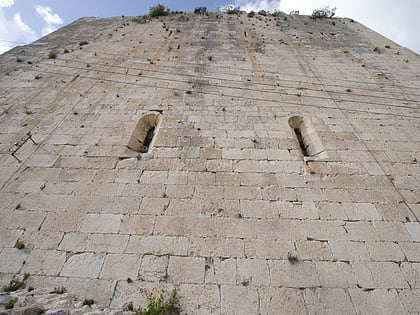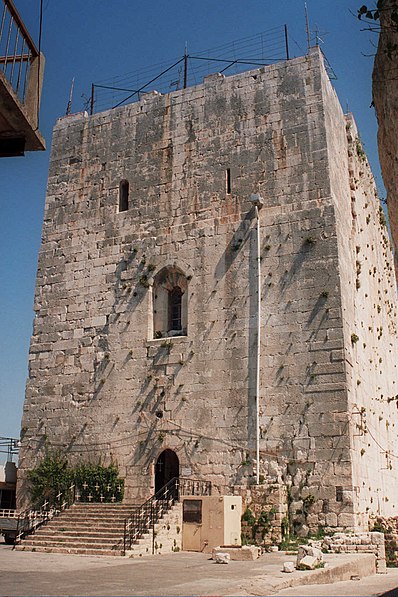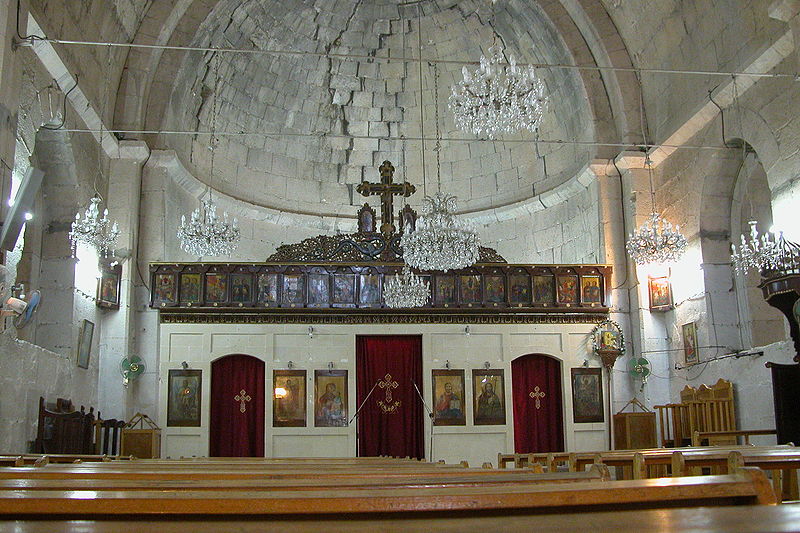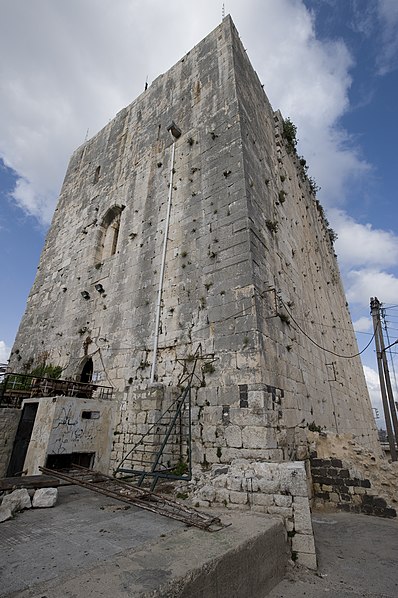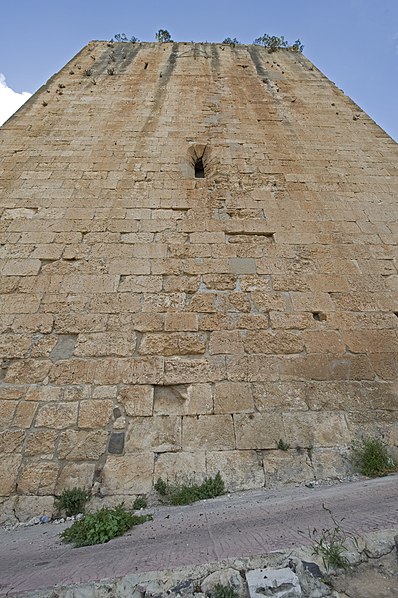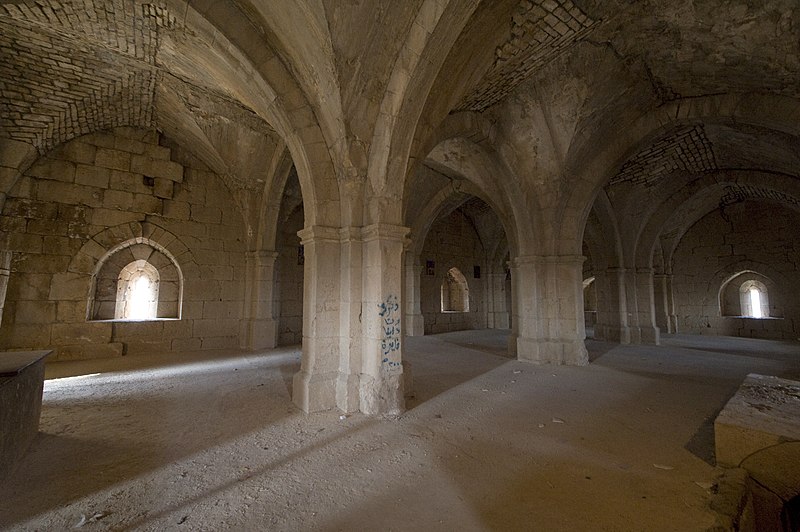Chastel Blanc
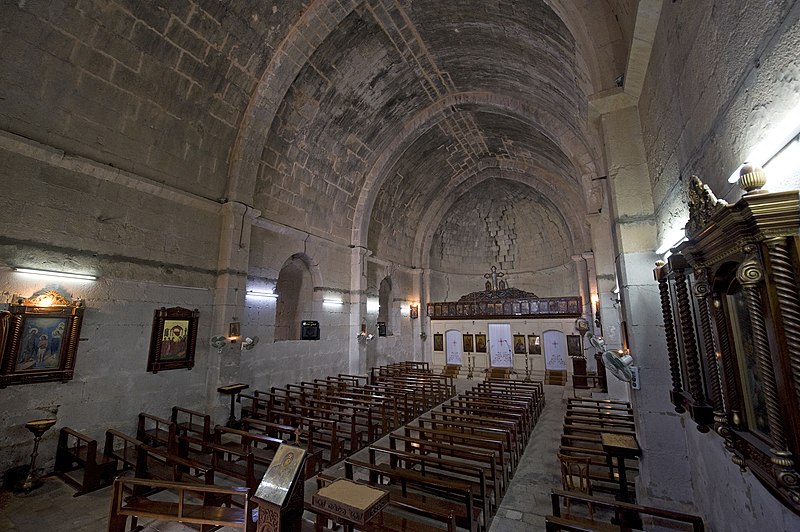
Facts and practical information
Chastel Blanc, also known as the White Castle, stands as a sentinel of history in the mountainous region of Syria. This formidable castle, built by the Knights Templar during the Crusades, is a testament to the era of knights and conquests in the Middle East. Its strategic location, on a hill in the town of Safita, made it a key defensive stronghold for the Crusaders in the region.
Constructed in the 12th century, Chastel Blanc's purpose was to oversee and protect the surrounding lands, including the important trade routes that passed through the area. Its impressive walls and robust architecture have withstood the test of time, offering a glimpse into the military engineering of the medieval period.
Despite the wear of centuries and the turmoil that has swept through the region, the castle remains largely intact. The main tower, which dominates the structure, is still accessible and provides visitors with a panoramic view of the lush Syrian landscape, echoing the strategic vantage point it once offered its original defenders.
Chastel Blanc is not just a military relic but a cultural beacon as well, reflecting the diverse influences and occupants it has seen over the centuries, including the Templar knights, the Mamluks, and the Ottomans. Today, it stands as a monument to the complex tapestry of Syrian history, inviting scholars and tourists alike to explore its storied walls and learn about the epochs it has survived.
Safita City Centerصافيتا Tartus
